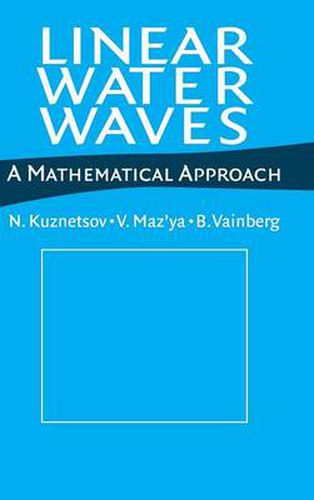Readings Newsletter
Become a Readings Member to make your shopping experience even easier.
Sign in or sign up for free!
You’re not far away from qualifying for FREE standard shipping within Australia
You’ve qualified for FREE standard shipping within Australia
The cart is loading…






This book gives a self-contained and up-to-date account of mathematical results in the linear theory of water waves. The study of waves has many applications, including the prediction of behavior of floating bodies (ships, submarines, tension-leg platforms etc.), the calculation of wave-making resistance in naval architecture, and the description of wave patterns over bottom topography in geophysical hydrodynamics. The first section deals with time-harmonic waves. Three linear boundary value problems serve as the approximate mathematical models for these types of water waves. The next section, in turn, uses a plethora of mathematical techniques in the investigation of these three problems. Among the techniques used in the book the reader will find integral equations based on Green’s functions, various inequalities between the kinetic and potential energy, and integral identities which are indispensable for proving the uniqueness theorems. For constructing examples of non-uniqueness usually referred to as ‘trapped modes’ the so-called inverse procedure is applied. Linear Water Waves will serve as an ideal reference for those working in fluid mechanics, applied mathematics, and engineering.
$9.00 standard shipping within Australia
FREE standard shipping within Australia for orders over $100.00
Express & International shipping calculated at checkout
This book gives a self-contained and up-to-date account of mathematical results in the linear theory of water waves. The study of waves has many applications, including the prediction of behavior of floating bodies (ships, submarines, tension-leg platforms etc.), the calculation of wave-making resistance in naval architecture, and the description of wave patterns over bottom topography in geophysical hydrodynamics. The first section deals with time-harmonic waves. Three linear boundary value problems serve as the approximate mathematical models for these types of water waves. The next section, in turn, uses a plethora of mathematical techniques in the investigation of these three problems. Among the techniques used in the book the reader will find integral equations based on Green’s functions, various inequalities between the kinetic and potential energy, and integral identities which are indispensable for proving the uniqueness theorems. For constructing examples of non-uniqueness usually referred to as ‘trapped modes’ the so-called inverse procedure is applied. Linear Water Waves will serve as an ideal reference for those working in fluid mechanics, applied mathematics, and engineering.